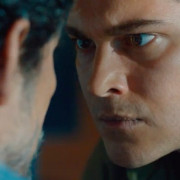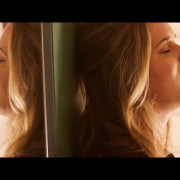Christopher columbus
Содержание:
- Voyages
- Early Years
- Christopher Columbus
- Карьера в киноиндустрии
- Фильмография
- Personal Life
- Fourth Voyage
- When Did Columbus Discover America?
- How to avoid contagion?
- Books and films about Christopher Columbus
- Facts about Christopher Columbus for Kids
- Background
- Columbus’ Route
- First Voyage
- The ships Christopher Columbus used to sail to America were a nightmare.
- Гарри Поттер и тайная комната (2002) (Harry Potter and the Chamber of Secrets)
- Noble Phantasm
- Детство звезды
- Personality and characteristics
- Later life
- New outbreak: COVID-19 (SARS-CoV-2)
- Appearance and Personal Habits
- A Journey West
- Active Skills
- Карьера
Voyages
In 1493, Columbus took to the seas on his second expedition and explored more islands in the Caribbean Ocean. Upon arrival at Hispaniola, Columbus and his crew discovered the Navidad settlement had been destroyed with all the sailors massacred.
Spurning the wishes of the local queen, who found slavery offensive, Columbus established a forced labor policy over the native population to rebuild the settlement and explore for gold, believing it would prove to be profitable. His efforts produced small amounts of gold and great hatred among the native population.
Before returning to Spain, Columbus left his brothers Bartholomew and Diego to govern the settlement on Hispaniola and sailed briefly around the larger Caribbean islands further convincing himself he had discovered the outer islands of China.
It wasn’t until his third voyage that Columbus actually reached the mainland, exploring the Orinoco River in present-day Venezuela. Unfortunately, conditions at the Hispaniola settlement had deteriorated to the point of near-mutiny, with settlers claiming they had been misled by Columbus’ claims of riches and complaining about the poor management of his brothers.
The Spanish Crown sent a royal official who arrested Columbus and stripped him of his authority. He returned to Spain in chains to face the royal court. The charges were later dropped, but Columbus lost his titles as governor of the Indies and, for a time, much of the riches made during his voyages.
Early Years
Columbus first went to sea as a teenager, participating in several trading voyages in the Mediterranean and Aegean seas. One such voyage, to the island of Khios, in modern day Greece, brought him the closest he would ever come to Asia. ADVERTISEMENT Thanks for watching!Visit Website ADVERTISEMENT Thanks for watching!Visit Website
His first voyage into the Atlantic Ocean in 1476 nearly cost him his life as the commercial fleet he was sailing with was attacked by French privateers off the coast of Portugal. His ship was burned and Columbus had to swim to the Portuguese shore.
He made his way to Lisbon, Portugal, where he eventually settled and married Felipa Perestrello. The couple had one son, Diego, around 1480. His wife died soon after, and Columbus moved to Spain. He had a second son, Fernando, who was born out of wedlock in 1488 with Beatriz Enriquez de Arana.
After participating in several other expeditions to Africa, Columbus gained knowledge of the Atlantic currents flowing east and west from the Canary Islands.
Christopher Columbus
Christopher Columbus is a name that most give tribute to for so many of the explorations of the 15th century.
Columbus was an Italian explorer who was financed by the Spanish royalty to compete with the Portuguese in the most explosive time of seafaring exploration.
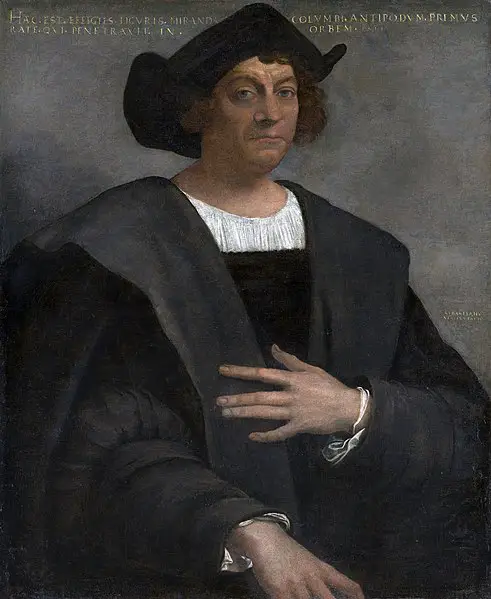
During that era, ships sailing to Asia took long and hazardous routes for necessary trade. Explorers that were sent out to sea were also tasked with the job of finding new lands to claim and bring wealth back to the country they represented.
The Atlantic Ocean
Columbus made a total of four trips across the Atlantic Ocean: 1492, 1493, 1498 and 1502. On one of these voyages he was in search of India, and when he landed at what is now America, he mistook it for India and named the indigenous people “Indians.”
The 15th and 16th centuries were known as the “Age of Exploration,” and with newly designed ships, many countries were sending explorers out to find spices, gold, and other items from Africa and Asia.
Spain and Portugal led the way with the most ships and explorers and it was during this time that Christopher Columbus was given ships to sail to unknown territory to claim land for Spain.
Early Years
He was born on October 31, 1451, in Genoa, Italy, and began sailing when he was just a teenager.
Columbus was married to Felipa Moniz Perestrelo, in 1477 who later died while given birth in 1485.
In his early life, Columbus studied cartography, mathematics, astronomy, and navigation. These lessons were valuable for his future voyages.
Columbus had different ideas
The Portuguese had figured out a way to shorten sailing to Asia, but Columbus had a different idea.
He took a chance on believing that he could sail across the Atlantic instead of around the African Cape of Good Hope, and this was the basis for his planned voyages.
Columbus thought that those that had configured the circumference of the Earth had miscalculated. His idea was that it was smaller than the experts thought and an easier voyage from Europe to Asia could be accomplished.
He was to later find out that his math was incorrect, but it did lead him to other successes.
Columbus approached both the Portuguese and the English to accomplish his ideas, but only Ferdinand of Aragon and Isabella of Castile, monarchs of Spain were interested.
Their goal was more land, riches, and expansion of the Catholic religion, and they believed that Columbus’ ideas were sound.
Columbus made a deal with the Spanish monarchs to keep ten percent of the riches he might find as well as having a Spanish noble title, and to be the governor of any lands that he discovered.
Discoveries in 1492
1492 is the famous year that Columbus launched the ships named the Nina, the Pinta, and the Santa Maria, with the goal of finding a shorter route to the East Indies. The first landfall was on one of the islands in the Bahamas.
Columbus and the three ships sailed for months from one island to the next in what is now the Caribbean. At this point, they were in search of riches such as gold, silver, precious stones, spices, and any other valuables.
By 1493 Columbus had to leave some of the men from the ships behind in what was known as Hispaniola; today’s Haiti and the Dominican Republic, so that he could return to Spain.
Detailed diary
Columbus kept a very detailed diary of the first voyage, documenting everything from daily life with the crew to wildlife they encountered.
The diary includes very racist impressions of local inhabitants and his belief that they should be enslaved.
Six months later Columbus set out on another voyage to the Americas. His voyage to find riches was mostly a failure, but he brought 500 slaves back to Queen Isabella.
To the surprise of Columbus, Isabella rejected the slaves as she felt these people were Spanish subjects and she returned the “gift.”
What happened in 1498
By 1498 Columbus was on his third voyage and this time he stopped at the mainland of South American and Trinidad.
When he sailed back to Hispaniola the colonists had revolted due to mismanagement of the colony and the native Taino population had all but been destroyed.
Although Columbus was arrested and returned to Spain in chains, he was cleared of charges in 1502 but lost his noble title.
The last voyage of an aging Columbus took his ship to Panama, only miles from the Pacific Ocean.
After storms damaged two of the four ships he abandoned them and returned to Spain where he died in 1506.
Карьера в киноиндустрии
Одной из первых работ, выполненных Коламбусом, стал сценарий к фильму «Гремлины». Им заинтересовался уже тогда знаменитый режиссер и продюсер Стивен Спилберг, и в 1984 году с его помощью был снят первый фильм о гремлинах, имевший довольно большой успех в 80-х.
Впервые свои режиссерские способности Коламбус Крис применил в 1987 году, сняв комедийную ленту «Приключения приходящей няни». Но настоящим успехом стал семейный рождественский фильм «Один дома», который он снял в 1990 году. Картина не только собрала огромные суммы в прокате, но и была очень тепло принята публикой и кинокритиками, а сегодня является культовой лентой, которую ежегодно перед Рождеством и Новым годом смотрят миллионы людей по всей планете.
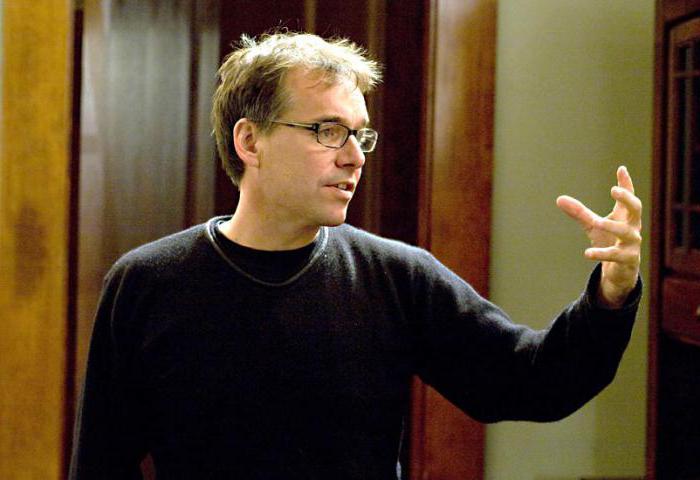
В 1992 году Крис Коламбус, фильмы которого уже стали высоко цениться, снял сиквел нашумевшей комедии под названием «Один дома 2: Затерянный в Нью-Йорке».
Помимо двух фильмов «Один дома», Коламбус снял первую и вторую части кинофраншизы о Гарри Поттере, которые добились просто фантастической популярности.
Получили также известность среди кинопроектов, которыми занимался Крис Коламбус, фильмы «Ночь в музее» и «Прислуга».
Также Коламбус является соавтором Неда Виззини в написании романа «Дом секретов». Если перечислять все проекты режиссера, то можно написать целую книгу о нем. Крис Коламбус, биография которого стала объектом нашего внимания, является выдающимся человеком с невероятным количеством всевозможных талантов. Итак, какие еще работы, созданные им, достойны внимания?
Фильмография
| Год | Заголовок | Директор | Режиссер | Сценарист |
|---|---|---|---|---|
| Безрассудный | да | |||
| Гремлины | да | |||
| 1985 г. | Балбесы ( Goonies ) | да | ||
| Тайна пирамиды ( Молодой Шерлок Холмс ) | да | |||
| 1987 г. | Безумная ночь ( Приключения няни ) | да | ||
| 1988 г. | Отель разбитых сердец | да | да | |
| 1989 г. | Маленький Немо: Приключения в Стране сна | да | ||
| 1990 г. | Мама, я опоздал на самолет ( Один дома ) | да | ||
| 1991 г. | Твоя мать или я ( Только одинокий ) | да | да | |
| 1992 г. | Мама, я снова опоздал на самолет ( Один дома 2: Затерянный в Нью-Йорке ) | да | ||
| 1993 г. | Миссис Даутфайр ( миссис Даутфайр ) | да | ||
| 1995 г. | Девять месяцев ( девять месяцев ) | да | ||
| 1996 г. | Джингл ( Jingle All the Way ) | да | ||
| 1998 г. | Мой лучший враг ( мачеха ) | да | ||
| 1999 г. | Двухсотлетний человек ( Bicentennial Man ) | да | ||
| 2001 г. |
Harry Potter and the Philosopher’s Stone ( Гарри Поттер и Философский камень ) |
да | ||
| Обезьяна | да | |||
| 2002 г. | Гарри Поттер и Тайная комната ( Harry Potter and the Secret Room ) | да | ||
| 2004 г. | Безумное Рождество! ( Рождество с чудаками ) | да | ||
| Гарри Поттер и узник Азкабана ( Harry Potter and the Prisoner of Azkaban ) | да | |||
| 2005 г. | Фантастическая четверка ( Fantastic Four ) | да | ||
| Арендная плата | да | |||
| 2006 г. | Night at the Museum ( Ночь в музее ) | да | ||
| 2007 г. | Фантастическая четверка и Серебряный серфер ( Fantastic Four: Rise of the Silver Surfer ) | да | ||
| 2009 г. | Ночь в музее 2 ( Night at the Museum 2: Battle of the Smithsonian ) | да | ||
| Я люблю тебя, Бет Купер | да | |||
| 2010 г. | Перси Джексон: Похититель молний ( Перси Джексон и олимпийцы: Похититель молний ) | да | ||
| 2011 г. | Цвет чувств ( Помощь ) | да | ||
| 2012 г. | Эпплбаум (телефильм) | да | ||
| Перси Джексон: Море чудовищ ( Percy Jackson: Sea of Monsters ) | да | |||
| 2014 г. | Маленькие аварии | да | ||
| Ночь в музее: Тайна фараонов | да | |||
| 2015 г. | Пикселей | да | ||
| 2016 г. | Христос Господь: из Египта | да | ||
| Таллула | да | |||
| 2017 г. | Патти Торт $ | да | ||
| Гигантский охотник | да | |||
| 2018 г. | Рождественские хроники ( The Christmas Chronicles ) | да | ||
| 2020 г. | Скуби! ( Скуб! ) | да | ||
| Рождественские хроники 2 ( The Christmas Chronicles 2 ) | да |
Personal Life
Columbus married a Portuguese woman, Felipa Moniz Perestrelo, in 1477. She came from a semi-noble family with useful maritime connections. She died giving birth to a son, Diego, in 1479 or 1480. In 1485, while in Córdoba, he met young Beatriz Enríquez de Trasierra, and they lived together for a time. She bore him an illegitimate son, Fernando. Columbus made many friends during his travels and he corresponded with them frequently. His friends included dukes and other noblemen as well as powerful Italian merchants. These friendships would prove useful during his frequent hardships and bouts of bad luck.
Fourth Voyage
Already in his fifties, Columbus felt he had one more trip in him. He convinced the Spanish crown to finance one more journey of discovery. Although Columbus had proven a poor governor, there was no doubting his sailing and discovery skills. He left in May of 1502 and arrived to Hispaniola just ahead of a major hurricane. He sent a warning to the 28-ship fleet about to depart for Spain to delay but they ignored him, and 24 of the ships were lost. Columbus explored more of the Caribbean and part of Central America before his ships rotted. He spent a year on Jamaica before being rescued. He returned to Spain in 1504.
When Did Columbus Discover America?
On October 12, 1492, after 36 days of sailing westward across the Atlantic, Columbus and several crewmen set foot on an island in the present-day Bahamas, claiming it for Spain.
There his crew encountered a timid but friendly group of natives who were open to trade with the sailors, exchanging glass beads, cotton balls, parrots and spears. The Europeans also noticed bits of gold the natives wore for adornment.
Columbus and his men continued their journey, visiting the islands of Cuba (which he thought was mainland China) and Hispaniola (now Haiti and the Dominican Republic, which Columbus thought might be Japan) and meeting with the leaders of the native population.
During this time, the Santa Maria was wrecked on a reef off the coast of Hispaniola. With the help of some islanders, Columbus’ men salvaged what they could and built the settlement Villa de la Navidad (“Christmas Town”) with lumber from the ship.
Thirty-nine men stayed behind to occupy the settlement. Convinced his exploration had reached Asia, he set sail for home with the two remaining ships. Returning to Spain in 1493, Columbus gave a glowing, somewhat exaggerated report and was warmly received by the royal court.
How to avoid contagion?
As has been mentioned in the media, the best way to avoid contagion is to wash your hands regularly. Places where many people gather and hospitals should also be avoided if it is not an emergency. In case of symptoms or deterioration, attention should be requested through the means provided by each country. Isolation in this case could prevent contagion from others. Since there is still no treatment or cure for the disease, the patient’s recovery depends on the care taken in the days after the infection.
By November 2020, the first vaccine candidates appeared. By February 2021, around 10 vaccines had been licensed for public use.
Symptoms and differences with the Flu
The person infected with the virus will have a dry cough, fever, sore throat, headache, shortness of breath, and fatigue. Unlike the flu, the virus is not accompanied by sneezing, nasal congestion, or diarrhea.
Books and films about Christopher Columbus
Some famous books that tell the story of Christopher Columbus are:
- Diary On board of Christopher Columbus: tells us how he is surrounded by controversy and mystery.
- The Four Journeys and the Testament: narrates the first expeditions to the New World.
- On board diary: stories of Christopher Columbus and his enigmas and secrets.
- The great adventure of Christopher Columbus: the life of Columbus narrated by Manuel Fernández Álvarez.
Several films have also been created where the story is reflected, among them we can mention:
- Also the rain: starring Gabriel Bernal and Luis Tosar shows us the two faces that Christopher Columbus had, one ambitious and the other as an intrepid navigator.
- Alba de América: This is one of the most controversial in the history of Columbus’ arrival in America.
- The Other Conquest: narrates the resistance that Emperor Moctezuma put up against the Spanish invasion.
- The Golden One: a film shot in Costa Rica that narrates the role of Spain during the conquest.
- The Conquest of Paradise: narrates the discovery of America and the experiences of Christopher Columbus, and how the lives of the Indians changed with the discovery.
Written by Gabriela Briceño V.
Facts about Christopher Columbus for Kids
- Born – October 31, 1451, in Genoa, Italy.
- Married – Felipa Moniz Perestrelo, in 1477 and had one son. Felipa died while given birth in 1485
- Later in life, he had another son with Beatriz Enríquez de Trasierra
- His real name in Italian was Cristoforo Colombo
- His name in Spanish was Cristóbal Colón
- He had ideas to sail across the Atlantic Ocean to reach China and East Asia and spent years trying to find funds.
- Queen Isabella and King Ferdinand of Spain decided to help fund and pay for the trip
- He left Spain on August 3, 1492, with three ships called the Nina, the Pinta, and the Santa Maria
- On October 12, 1492, he discovered the small island in the Bahamas that he later named San Salvador
- Best known for Discovering America
- Died – May 20, 1506
What did you learn?
What country did Italian explorer Christopher Columbus sail his ships for?
Spain
What were the reasons the Spanish royalty agreed to finance Columbus’ voyages?
riches, wealth, new routes for trade, expansion of the Catholic religion
What education did Columbus have that helped him as one of the new explorers?
Columbus studied cartography, mathematics, astronomy, and navigation
What was the deal that Columbus made with the Spanish royalty for his voyages?
keep ten percent of the riches he might find as well as having a Spanish noble title, and to be the governor of any lands that he discovered
What were the names of the three most famous ships that were under Columbus’ control?
Nina, the Pinta, and the Santa Maria
What was the goal of Columbus’ first voyage?
find a shorter route to the East Indies
Background
Colombo was born in the Republic of Genoa (today part of Italy). Under the auspices of the Catholic Monarchs of Spain, he completed four voyages across the Atlantic Ocean. At the time, most the world believed that there was no other continent on the other side of the Ocean and that to sail there was a death-wish, however due to a mathematical error Columbus believed that the Earth was pear-shaped and that he could navigate a way to India.
While otherwise, Colon’s mathematical error would have resulted in the death of his crew, by sheer luck, Columbus’ vessels happened upon the Caribbean which Cristoforo declared as, «India». Colombo proceeded to ransack, pillage and raid the Caribbean while murdering, assaulting and enslaving countless indigenous peoples and destroying their cultures. The explorer and his men also spread several viruses which they were infected with from the densely populated cities of Europe which the Indigenous were not immune to, resulting in more death by illness.
When Columbus returned to Europe, he aided in establishing the Transatlantic Slave Trade and further colonization of the, «New World». The accounts of Colon’s adventures were subsequently used as colonial propaganda, most prominently in what became the United States of America despite Colon having never stepped foot on the land which became the country. Many accounts of Colon were subsequently manipulated, exaggerated and outright fabricated for this purpose with popular myths including him having discovered the U.S.A., having been the first European to believe Earth was round (it was common knowledge), and that he, «Discovered» the Americas (Indigenous peoples had been living there for thousands of years after having immigrated via land-bridge in prehistory and the first Europeans on the continent were the vikings c. 1000 AD).
Columbus’ Route
The Asian islands near China and India were fabled for their spices and gold, making them an attractive destination for Europeans – but Muslim domination of the trade routes through the Middle East made travel eastward difficult.
Columbus devised a route to sail west across the Atlantic to reach Asia, believing it would be quicker and safer. He estimated the earth to be a sphere and the distance between the Canary Islands and Japan to be about 2,300 miles.
Many of Columbus’ contemporary nautical experts disagreed. They adhered to the (now known to be accurate) second-century B.C. estimate of the Earth’s circumference at 25,000 miles, which made the actual distance between the Canary Islands and Japan about 12,200 statute miles.
Despite their disagreement with Columbus on matters of distance, they concurred that a westward voyage from Europe would be an uninterrupted water route.
Columbus proposed a three-ship voyage of discovery across the Atlantic first to the Portuguese king, then to Genoa and finally to Venice. He was rejected each time.
In 1486, he went to the Spanish monarchy of Queen Isabella of Castile and Ferdinand II of Aragon. Their focus was on a war with the Muslims, and their nautical experts were skeptical, so they initially rejected Columbus.
The idea, however, must have intrigued the monarchs, for they kept Columbus on a retainer. Columbus continued to lobby the royal court, and soon the Spanish army captured the last Muslim stronghold in Granada in January 1492. Shortly thereafter, the monarchs agreed to finance his expedition.
First Voyage
Columbus’ first voyage began on August 3, 1492. He had been given three ships: the Niña, the Pinta and the flagship Santa Maria. They headed west and on October 12, sailor Rodrigo de Triana spotted land. They first landed on an island Columbus named San Salvador: there is some debate today as to which Caribbean island it was. Columbus and his ships visited several other islands including Cuba and Hispaniola. On December 25, the Santa Maria ran aground and they were forced to abandon her. Thirty-nine men were left behind at the settlement of La Navidad. Columbus returned to Spain in March of 1493.
The ships Christopher Columbus used to sail to America were a nightmare.
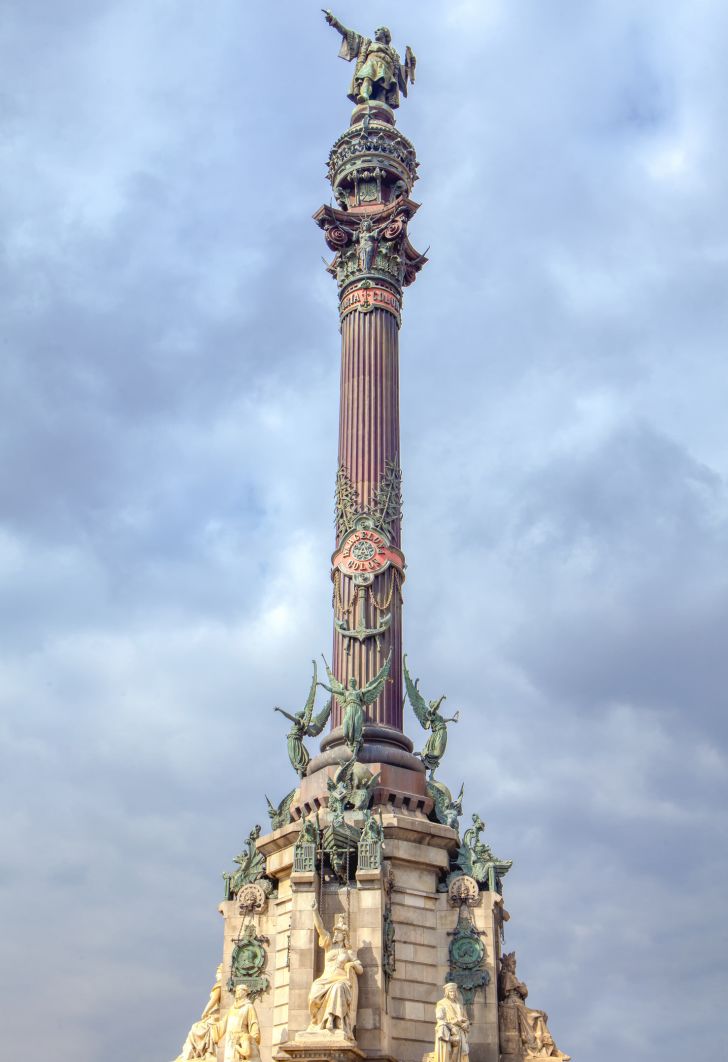 The column of the Christopher Columbus monument in Barcelona, Spain, is almost 200 feet high.RussieseO/iStock via Getty Images Plus
The column of the Christopher Columbus monument in Barcelona, Spain, is almost 200 feet high.RussieseO/iStock via Getty Images Plus
The two smaller boats that made up Christopher Columbus’s fleet—the Niña and the Pinta (which were nicknames, not official names)—were state-of-the-art caravels. These vessels were known for their aerodynamic sails and lightweight build that made them fast and easy to navigate. They were also famously uncomfortable. The one cabin at the back of the ship was reserved for its captain, and the rest of the 20 to 30 crew members had to sleep on the cramped deck—that is, if they could ever stop working long enough to actually rest for a moment. The situation was slightly better on the larger Santa Maria, where there were cabins for both Columbus and his crew. Even so, the sailors were close to mutiny by the time the fleet reached the Bahamas following roughly two months at sea.
Гарри Поттер и тайная комната (2002) (Harry Potter and the Chamber of Secrets)
Детектив, Зарубежный фильм, Приключения, Семейный, Фэнтези
tagHD 2160р, tagHD 1080, tagHD 720, tagМаги и Волшебники, tagРежиссерская версия, tagЭкранизация
Экранизация по произведению: Джоан К. Роулинг
Режиссер: Крис Коламбус
В ролях: Дэниэл Рэдклифф, Руперт Гринт, Эмма Уотсон
Начинается второй год обучения Гарри Поттера в школе волшебников. В этом году в школе начинают происходить странные события, некое существо превращает учащихся в каменные статуи, а Гарри начинает слышать в своей голове непонятные голоса, на неизвестном ему языке. Существо оказывается ужасным Василиском, подчиняясь чей-то злой воле, он выползает из Тайной комнаты и наводит ужас на весь Хогвартс. Если так пойдет и дальше, то школе волшебников придет конец. Кто-то должен бросить вызов Василиску, ведь учитель защиты от темных сил оказывается обычным пижоном.
Noble Phantasm
Base Damage: x1.5
Rank
Noble Phantasm Type
A
Anti-Army
Hits
Per Hit Percentage
5
6%, 13%, 20%, 26%, 35%
Effect
Deals damage to all enemies.
NP Level
1
2
3
4
5
Damage +
300%
400%
450%
475%
500%
Overcharge Effect
Reduces their critical attack chance for 3 turns.
Charge
100%
200%
300%
400%
500%
Crit Chance —
20%
30%
40%
50%
60%
| Upgrade after |
|---|
Base Damage: x1.5
Rank
Noble Phantasm Type
A+
Anti-Army
Hits
Per Hit Percentage
5
6%, 13%, 20%, 26%, 35%
Effect
Deals damage to all enemies.
NP Level
1
2
3
4
5
Damage +
400%
500%
550%
575%
600%
Overcharge Effect
Reduces their critical attack chance for 3 turns.
Charge
100%
200%
300%
400%
500%
Crit Chance —
50%
62.5%
75%
87.5%
100%
https://youtube.com/watch?v=NJE8VpBVTkU%3F
Детство звезды
Биография Кристофера Коламбуса начинается 10 сентября 1958 года, когда он родился в Спэнглере, штат Пенсильвания. Вырос же при этом ребенок в другом месте – на окраине Янгстауна, штат Огайо. Коламбусы были простой семьей. Отец режиссера работал обычным шахтером. Однако это все не помешало одаренному ребенку пробиться в мир Голливуда.
Ребенок рос разносторонне одаренным и искал свое место в жизни. Так, например, сначала он рисовал обычные комиксы, но потом на ум ему пришло, что это похоже на раскадровку кино. Ребенок был довольно талантлив.
Образование будущий режиссер начал получать все там же в Огайо, где обучался в частной школе имени Джона Кеннеди. Причем свои первые короткометражки снимать Крис начал еще здесь. Тогда он использовал для этого 8-мм камеру. Тогда Коламбусу было 15 лет.
После окончания школы он поступает в Школу искусства ТИШ, которая находится при Нью-Йоркском Университете. На тот момент в сфере его интересов лежал британский кинематограф, в частности, он восхищался комедиями авторства режиссеров Туманного Альбиона и высоко оценивал фирменный «английский юмор». При этом его комедии называют лицом современного американского голливудского кинематографа.
Во время обучения в университете он изучал производство фильмов и режиссуру. При этом практиковал и написание сценариев. Свой первый сценарий он продал, пока еще был студентом. Стоил этот сценарий режиссерам 5000 долларов. Фильм назывался «Жокеи». Это по замыслу Криса была полуавтобиографическая комедия, посвященная мальчику-католику, пытающемуся пройти отбор в футбольную команду. При этом сценарий очень сильно переработали. Но даже несмотря на это фильм сняли, и это сделало самую мощную и заметную рекламу будущему режиссеру.
Когда Крис работал в мастерской комиксов, ему удалось сотворить сценарный шедевр, который сегодня знают миллионы людей во всем мире. Именно тогда Стивен Спилберг купил у него сценарий фантастической комедии «Гремлины». И это дало определенный толчок карьере молодого человека, т.к. после этого Коламбус получил заказы на сценарии таких фильмов, как «Балбесы» и «Молодой Шерлок Холмс». Оба фильма были вскоре сняты и появились в прокате уже в 1985 году.
Personality and characteristics
- Christoffa: «Oh, I have been waiting for this moment, Luis. Do you feel it, the tide shifting beneath us?«
- Luis: «Patience, Christoffa. It will take some time for Isabella to entertain thoughts of spending money on you.«
- Christoffa: «I have been waiting SIX YEARS for an answer from the Queen. If she cannot indulge me now, I will indulge other offers!«
- —Christoffa and Luis arguing about his case during the fall of Granada, 1491
A passionate explorer and adventurer, Christoffa was an ambitious man who was not afraid to broaden his horizons when it came to his dreams. His vision of charting a western trade route to the Orient across the Atlantic Ocean was regarded as dangerous and fanciful by many of his contemporaries. Despite the constant stream of disappointments, failing to obtain support by governments throughout Europe for many years, he was never swayed from his dream. His perseverance in the face of discouragement eventually saw his goals come to fruition.
While his determination effected his successes, his single-minded drive also endangered his life on multiple occasions, to be saved only with the timely aid of his more cautious friends. He had a tendency to be impulsive, a trait that only worsened when he became desperate after years of frustrated failures. Because of his rashness, he failed to heed Luis de Santángel’s suspicions that his meeting with Rodrigo Borgia was a trap and would walk right into yet another Templar ambush a few months later. His tactlessness and inability to restrain his impulses virtually dismantled his dream when he rushed to demand Queen Isabella for funds on the very night that Granada finally fell to her forces, a war that had exhausted her treasury from possibly funding his expedition. In the wake of this latest failure to negotiate with the queen, Christoffa nearly cut ties with the Assassins completely, holding them at fault for some of his failures despite the fact their efforts had foiled the Templar plot to prevent his voyage. It was only after they finally succeeded in eliciting the support of Queen Isabella that he came to acknowledge how their caution had saved his life on numerous occasions.
Later life
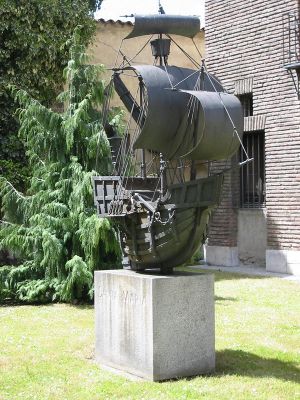
A statue of the Santa Maria, Columbus’ flagship in his first voyage. The statue is at the House of Columbus in Valladolid, Spain, the city where Columbus died.
While Columbus had always given the conversion of non-believers as one reason for his explorations, he grew increasingly religious in his later years. He claimed to hear divine voices, lobbied for a new crusade to capture Jerusalem, often wore Franciscan habit, and described his explorations to the «paradise» as part of God’s plan which would soon result in the Last Judgement and the end of the world.
In his later years, Columbus demanded that the Spanish Crown give him 10 percent of all profits made in the new lands, pursuant to earlier agreements. Because he had been relieved of his duties as governor, the crown did not feel bound by these contracts and his demands were rejected. His family later sued for part of the profits from trade with America, but ultimately lost some 50 years later.
Sepulchre of Columbus in the Cathedral of Seville
On May 20, 1506, Columbus died in Valladolid, fairly wealthy due to the gold his men had accumulated in Hispaniola. He was still convinced that his journeys had been along the east coast of Asia. Following his death, his body underwent excarnation—the flesh was removed so that only his bones remained. Even after his death, his travels continued: First interred in Valladolid and then at the monastery of La Cartuja in Seville, by the will of his son Diego, who had been governor of Hispaniola, his remains were transferred to Santo Domingo in 1542. In 1795, the French took over, and his remains was removed to Havana. After Cuba became independent following the Spanish-American War in 1898, his remains were moved back to the Cathedral of Seville, where they were placed on an elaborate catafalque. However, a lead box bearing an inscription identifying «Don Christopher Columbus» and containing fragments of bone and a bullet was discovered at Santo Domingo in 1877. To lay to rest claims that the wrong relics were moved to Havana and that Columbus is still buried in the cathedral of Santo Domingo, DNA samples were taken in June 2003 (History Today August 2003). Results announced in May 2006 show that at least some of Columbus’ remains rest in Seville, but authorities in Santo Domingo have not allowed the remains in their custody to be tested.
New outbreak: COVID-19 (SARS-CoV-2)
At the end of 2019, a new outbreak of the virus emerged in China, today called 2019nCov, COVID-19, or Wuhan Coronavirus. The epicenter was a market for live animals and although its origin is not certain, it is believed to come from the pangolins. The first reported cases were of people who were in the market, relatives, medical personnel, and visitors who were in the area. The virus appears to be transmitted by close contact. After the report of the first cases and the taking of measures by the Chinese government, the inhabitants of Wuhan were isolated, while in other countries measures were extreme pending a statement from the WHO.
Although initially, the WHO was cautious, in light of the new cases and the rapid spread of the disease, on January 30th the WHO declared an international emergency. By then, the virus had already reached Thailand, Japan, South Korea, the United Kingdom, the United States, Singapore, France, and Germany, among other countries. In March, the first cases appear in Latin America and Africa. Among the countries most affected by the virus are: Italy, the United States, Spain, the United States, and South Korea.
Currently, many countries have taken precautions such as isolation, border closures, cancellation of classes, public events, and the shutdown of transportation systems. Also, due to the spread of the virus, many supplies have been depleted. It should be noted that the virus is especially dangerous for the elderly and children. These are the most affected by the virus, as are people who suffer from other diseases at the time of contracting the virus.
Appearance and Personal Habits
Columbus was tall and lean, and had red hair which turned prematurely white. He had a fair complexion and a somewhat reddish face, with blue eyes and a hawkish nose. He spoke Spanish fluently but with an accent which was difficult for people to place.
In his personal habits he was extremely religious and somewhat prudish. He rarely swore, attended mass regularly, and often devoted his Sundays entirely to prayer. Later in life, his religiosity would increase. He took to wearing the simple robe of a barefoot friar around court. He was a fervent millenarist, believing that the end of the world was near.
A Journey West
Columbus may have conceived of the idea of sailing west to reach Asia as early as 1481 due to his correspondence with an Italian scholar, Paolo del Pozzo Toscaneli, who convinced him it was possible. In 1484, Columbus made a pitch to King João of Portugal, who turned him down. Columbus proceeded to Spain, where he first proposed such a trip in January of 1486. Ferdinand and Isabella were intrigued, but they were occupied with the reconquest of Granada. They told Columbus to wait. In 1492, Columbus had just about given up (in fact, he was on his way to see the King of France) when they decided to sponsor his trip.
Active Skills
| Available from the start |
|---|
| Voyager of the Storm B | ||||||||||
| Increases party’s NP damage for 1 turn.Increases party’s attack for 1 turn. | ||||||||||
| Level | 1 | 2 | 3 | 4 | 5 | 6 | 7 | 8 | 9 | 10 |
|---|---|---|---|---|---|---|---|---|---|---|
| NP Damage + | 7% | 7.7% | 8.4% | 9.1% | 9.8% | 10.5% | 11.2% | 11.9% | 12.6% | 14% |
| Attack + | 7% | 7.7% | 8.4% | 9.1% | 9.8% | 10.5% | 11.2% | 11.9% | 12.6% | 14% |
| Cooldown | 7 | 6 | 5 |
| Unlocks after 1st Ascension |
|---|
| Unyielding Will C | ||||||||||
| Grants self Guts status for 1 time, 3 turns. (Revives with 1 HP.)Charges own NP gauge. | ||||||||||
| Level | 1 | 2 | 3 | 4 | 5 | 6 | 7 | 8 | 9 | 10 |
|---|---|---|---|---|---|---|---|---|---|---|
| NP + | 10% | 12% | 14% | 16% | 18% | 20% | 22% | 24% | 26% | 30% |
| Cooldown | 9 | 8 | 7 |
| Unlocks after 3rd Ascension |
|---|
| Conquistador EX | ||||||||||
| Increases own Buster performance for 3 turns.Gains critical stars. | ||||||||||
| Level | 1 | 2 | 3 | 4 | 5 | 6 | 7 | 8 | 9 | 10 |
|---|---|---|---|---|---|---|---|---|---|---|
| Buster + | 10% | 11% | 12% | 13% | 14% | 15% | 16% | 17% | 18% | 20% |
| Stars + | 5 | 6 | 7 | 8 | 9 | 10 | 11 | 12 | 13 | 15 |
| Cooldown | 8 | 7 | 6 |
Карьера
Колумб был активным джазовым музыкантом с 1920-х по 1970-е годы и был отцом Сонни Пейна . Он руководил своей собственной группой с 1930-х до конца 1940-х годов, некоторое время проработав резидентуру в Savoy Ballroom . После середины 1940-х он играл на барабанах позади Луи Джордана , оставаясь с ним до 1952 года. В середине-конце 1950-х годов Колумб поддержал органную комбинацию Дикого Билла Дэвиса , и он записался с Дюком Эллингтоном в 1967 году. лидер 1970-х, помимо гастролей по Европе с Дэвисом. Во Франции он играл с Флойдом Смитом , Элом Греем , Эдди «Чистоголовым» Винсоном , Бадди Тейтом и Милтом Бакнером .
До инсульта, который частично парализовал его в 1993 году, Коломбо был самым старым работающим музыкантом в Атлантик-Сити .
Коломбо получил свой первый профессиональный концерт, играя с Флетчером Хендерсоном в 1921 году. В период с 1920-х по 1960-е годы он играл в большинстве ночных клубов города и руководил оркестром Club Harlem в течение 34 лет до 1978 года, когда клуб закрыл свои двери. После этого группа Коломбо выступала практически в каждом казино- отеле Атлантик-Сити . Во время инсульта он регулярно играл в Showboat .
Плакат к фильму 1945 года « Это случилось в Гарлеме»
Коломбо работал, записывался и гастролировал с известными джазовыми исполнителями, включая Дьюка Эллингтона , Диззи Гиллеспи , Луи Джордана , Луи Армстронга , Дикого Билла Дэвиса и Эллу Фицджеральд . Коломбо записал на лейбле Strand альбом под названием Jazz: Re-Discovering Old Favorites от Chris Columbo Quintette [так в оригинале ], включая версию «Summertime» с участием органиста Джонни «Хаммонда» Смита . Эта пластинка (с оборотной стороной высокотемпо-минорного блюза под названием «Minerology» [ sic ]) была довольно успешной на радио в начале 1960-х. Коломбо взмахивал палками в воздухе, отскакивал ими от пола и часто прыгал с сиденья мотоцикла, которое было его барабанным троном. Его сыном был барабанщик Count Basie Orchestra Сонни Пейн . Коломбо также появился в фильме 1945 года « Это случилось в Гарлеме» по мотивам ночного клуба « Смоллс рай» в Гарлеме и в фильме 1947 года « Берегись, сестра» .
